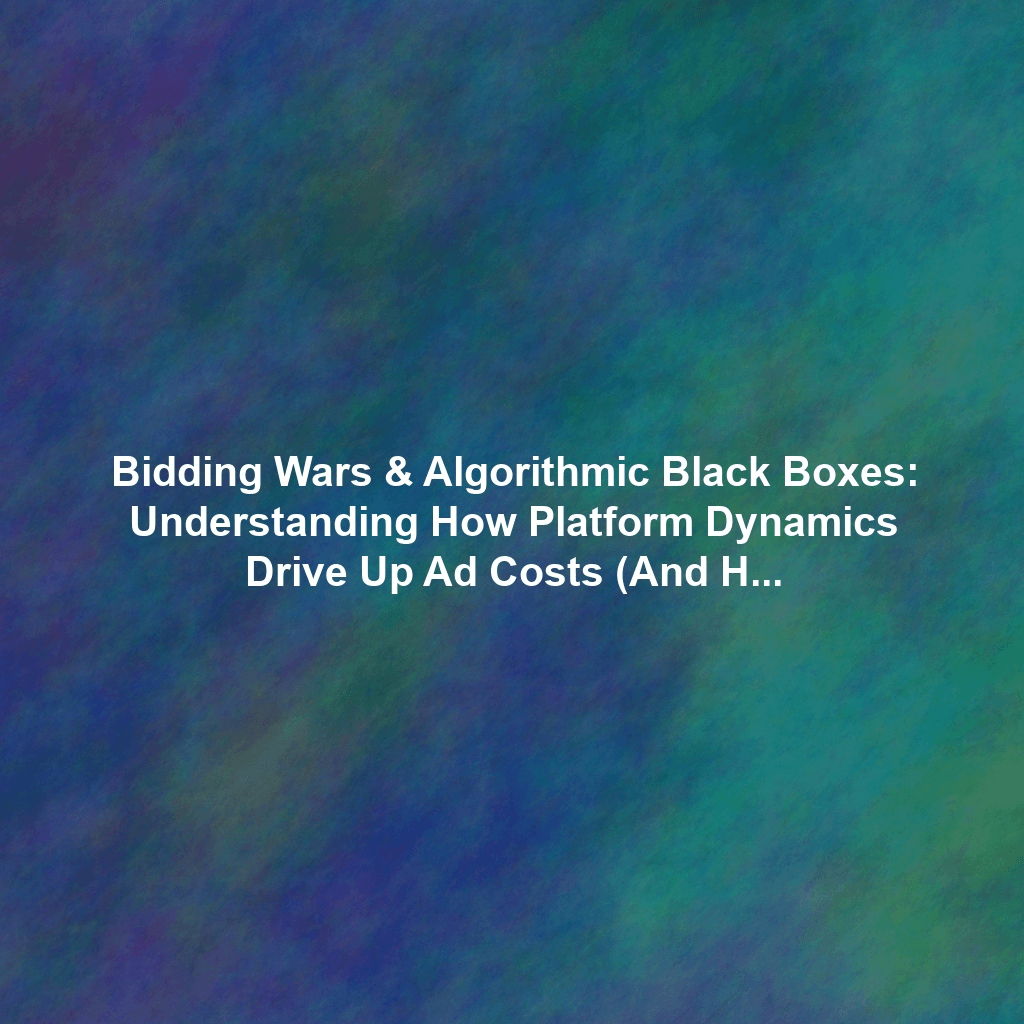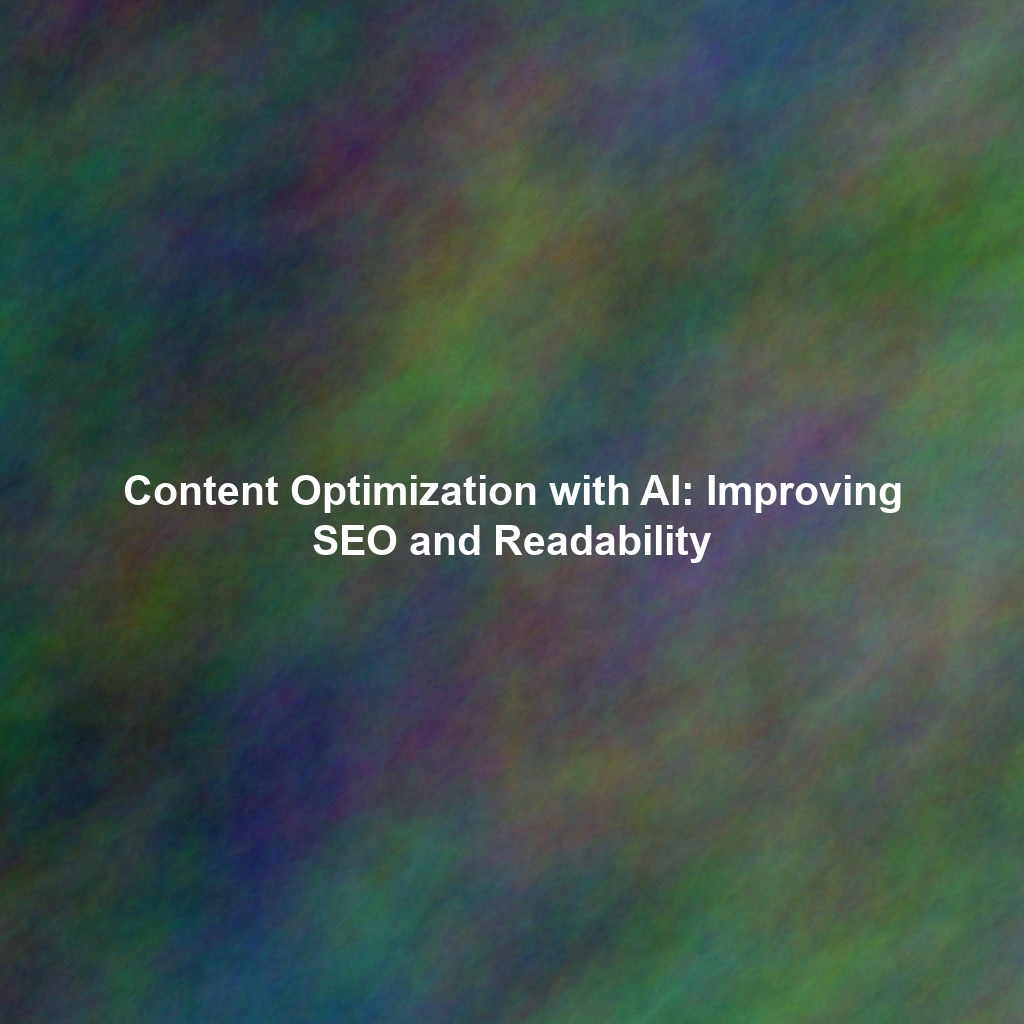The Anatomy of an Ad Auction: Understanding the Dynamics
Digital advertising platforms like Google Ads and Meta Ads operate on auction-based systems. When a user performs a search or visits a website, an auction takes place in milliseconds to determine which ads will be displayed. The highest bidder theoretically wins, but the reality is more complex. Factors such as ad quality, relevance, and predicted click-through rate also play significant roles. This is where the “algorithmic black box” comes into play. While the core principles of these auctions are generally known, the precise weight and interaction of various factors remain closely guarded secrets. This lack of transparency can be exploited by platforms and lead to inflated prices, especially when combined with a ‘growth at any cost’ approach.
The “Growth At Any Cost” Mentality: A Recipe for Disaster
Fueled by investor pressure or internal targets, a “growth at any cost” mindset often leads to reckless ad spending. Companies prioritize rapid user acquisition and market share over profitability. This manifests as:
- Unrealistic Customer Acquisition Cost (CAC) Targets: Ignoring the fundamental economics of the business and setting unsustainable CAC goals.
- Aggressive Bidding Strategies: Blindly increasing bids to outcompete rivals, without considering the return on investment.
- Broad Targeting: Casting a wide net in the hope of capturing more users, even if they are not highly qualified leads.
Common Pitfalls: How You’re Unintentionally Inflating Your Ad Costs
Even without a deliberate “growth at any cost” strategy, several common mistakes can lead to overpaying for advertising:
Broad Targeting: Casting Too Wide a Net
Targeting a broad audience may seem like a good way to reach more potential customers, but it often results in wasted ad spend. Irrelevant impressions and clicks dilute your budget and lower your overall return on investment. For example, advertising “running shoes” to everyone interested in “sports” will likely yield a lower conversion rate than targeting specifically “marathon runners” or “trail runners.”
Ignoring Negative Keywords: Letting the Wrong Traffic In
Negative keywords are crucial for filtering out irrelevant searches and preventing your ads from showing to the wrong audience. Failing to utilize them effectively allows irrelevant clicks to drain your budget. For example, if you sell premium running shoes, you might want to add “cheap,” “used,” or “DIY” as negative keywords to avoid targeting budget-conscious shoppers.
Insufficient A/B Testing: Sticking to What You Think Works (Instead of What Actually Does)
Without rigorous A/B testing, you’re essentially guessing which ads, landing pages, and targeting options resonate best with your audience. This leads to suboptimal performance and wasted ad spend. Regularly testing different ad creatives, headlines, calls to action, and landing page layouts is essential for continuous improvement.
Over-Reliance on Platform Automation: Trusting the Algorithm Too Much
While platform automation tools can be helpful for simplifying campaign management, over-reliance on them can be detrimental. Algorithms are designed to maximize platform revenue, not necessarily your profitability. Blindly trusting automated bidding strategies without careful monitoring and manual adjustments can lead to inflated costs.
Fighting Back: Strategies for Optimizing Your Ad Spend
Regaining control of your ad spend requires a strategic approach that combines meticulous campaign management with a deep understanding of your target audience and business goals:
Refine Your Targeting: Precision is Key
Focus on identifying and targeting your ideal customer with laser-like precision. Utilize demographic data, interests, behaviors, and custom audiences to reach the most qualified leads. Consider leveraging lookalike audiences based on your existing customer base to expand your reach while maintaining relevance.
Master Negative Keywords: Become a Filtering Pro
Dedicate time to building and maintaining a comprehensive list of negative keywords. Regularly review your search term reports to identify irrelevant keywords that are triggering your ads and add them to your negative keyword list. Think like your customer and anticipate the types of searches that would indicate a lack of interest in your product or service.
Embrace A/B Testing: Data-Driven Optimization
Make A/B testing a core part of your advertising strategy. Test different ad creatives, headlines, calls to action, landing pages, and targeting options to identify what resonates best with your audience. Use the data to continuously improve your campaigns and maximize your return on investment.
Leverage First-Party Data: Your Secret Weapon
First-party data (data collected directly from your customers) is an invaluable asset. Use it to create highly targeted audiences, personalize your ads, and improve your overall campaign performance. Integrate your CRM data with your advertising platforms to create custom audiences based on purchase history, demographics, and engagement levels.
Strategic Bidding: Know Your Worth
Instead of blindly increasing bids, focus on optimizing your ad quality and relevance. A higher Quality Score (Google Ads) or Relevance Score (Meta Ads) can lower your cost-per-click and improve your ad position. Set realistic bidding limits based on your target CAC and profitability goals. Consider using automated bidding strategies with caution, and always monitor performance closely.
Embrace Incrementality Testing: Measuring True Impact
Run incrementality tests to accurately measure the true impact of your advertising campaigns. These tests compare the behavior of users who see your ads versus those who don’t, providing a clearer picture of the incremental revenue generated by your advertising efforts. This allows you to optimize your spend more effectively.
Conclusion: Sustainable Growth Through Smart Advertising
Overpaying for advertising is a common pitfall, particularly for companies chasing “growth at any cost.” By understanding the dynamics of ad auctions, identifying common mistakes, and implementing a strategic approach to campaign management, you can regain control of your ad spend and achieve sustainable growth. Focus on precision targeting, rigorous testing, and leveraging first-party data to gain a competitive edge and reduce your reliance on opaque platform algorithms. Remember, smart advertising is not about spending more; it’s about spending smarter.
 Skip to content
Skip to content

